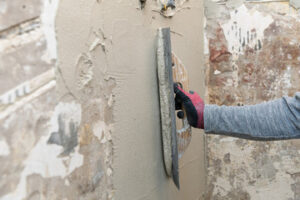Stucco Repair Tips
Stucco is a durable and long-lasting siding material that adds a stylish finish to your home. However, it does require maintenance and repair to keep your house looking its best. Cracks and holes in stucco can lead to water intrusion, which can cause major structural problems. Stucco repair and remediation can fix the issue and prevent further damage.
 Stucco Repair Philadelphia involves cleaning the damaged area, removing any loose or damaged stucco, applying a bonding agent to the surface, and then applying a fresh layer of stucco or patching compound. Proper stucco repair requires skill and experience to ensure a seamless, durable repair that blends in with the surrounding surface. Stucco cracks can be a major concern, especially if they aren’t fixed. They can lead to water damage, wood rot, and other structural issues.
Stucco Repair Philadelphia involves cleaning the damaged area, removing any loose or damaged stucco, applying a bonding agent to the surface, and then applying a fresh layer of stucco or patching compound. Proper stucco repair requires skill and experience to ensure a seamless, durable repair that blends in with the surrounding surface. Stucco cracks can be a major concern, especially if they aren’t fixed. They can lead to water damage, wood rot, and other structural issues.
Some common causes of stucco cracks include poor mixing of the cement and sand, inconsistency in coat thickness, extreme weather, and moisture issues. In addition, house settling can cause some stucco to crack over time. Hairline Cracks – These are the most common type of crack that you’ll see in your stucco. They are usually about 1/16 of an inch wide or smaller. Pattern Cracks are usually vertical or horizontal hairline cracks that look like grid patterns. These can indicate that the lath isn’t nailed on correctly or the wall may have differential settlement from the ground.
These cracks can run deep, exposing the building materials underneath them to the elements. They also allow water to penetrate the stucco and damage the foundation. This can be a serious issue and could lead to wood rot, mold and swollen drywall. A combination of water, dirt, and grease typically causes stains on stucco. This can occur when a driveway or parking lot is too close to a wall, or when rain causes debris to run off of the exterior surface.
Algae growth is another common cause of staining in stucco. A variety of conditions, such as nearby bushes and trees, increased humidity, and the presence of rainwater, can promote algae and mildew growth in untreated stucco walls.
Green algae stains on stucco can be removed with a solution made from water, bleach and dish soap. The solution should be applied to the stains and left to soak for a while.
Rust streaking on stucco can also be removed by applying a cleaning solution and then allowing it to sit for a while before rinsing with the pressure washer. The rust should come off easily with this method.
If your stucco is crumbling, it might be time to repair the damage. Not only will you save money on a full replacement, but it could also help prevent further damage.
Stucco is a popular choice for home exteriors because it’s durable, readily available and can be colored and textured. It’s also a versatile material that can last for 100 years or more without problems.
One of the most common causes of stucco failures is water damage. It can come from exterior issues such as rainstorms, but it can also be caused by interior moisture like a leaky air conditioner or sprinkler.
Before beginning a stucco repair job, make sure the area is adequately covered with grade D building paper to create a moisture barrier and ensure the new stucco will be properly adhered. Next, cut a piece of galvanized metal lath to match the repair area and attach it over the building paper.
Stucco is one of the most popular siding materials in use today. It is aesthetically beautiful, energy efficient, and low maintenance.
But, like any other building material, stucco can suffer from damage if it’s installed poorly or incorrectly. If left unattended, damaged stucco can lead to mold growth, leaking, and other structural issues.
If your stucco is showing signs of moisture intrusion, a thorough inspection and moisture test should be conducted by a professional. This process will usually uncover underlying issues that need to be addressed, including moisture damage in the sheathing, framing, and insulation.
Once these underlying issues are addressed, you can repair the stucco. If you opt for this option, be sure to choose a highly-trained contractor with a strong stucco remediation portfolio.
